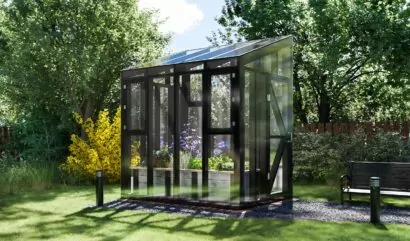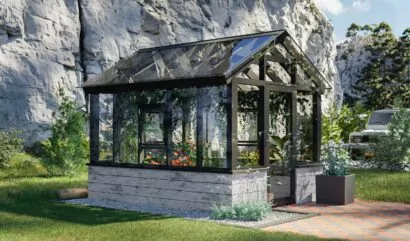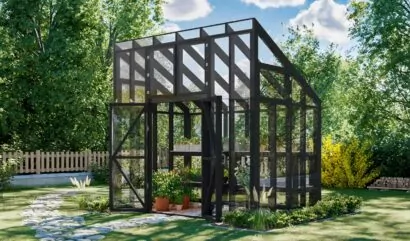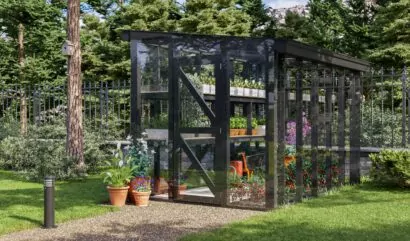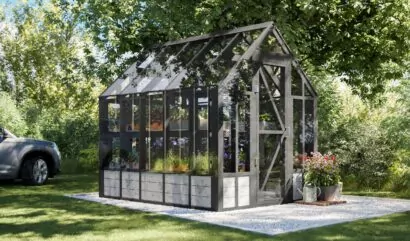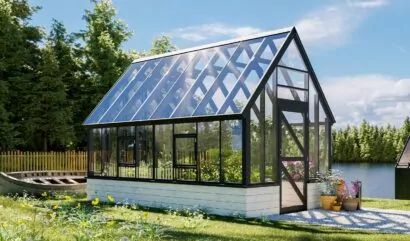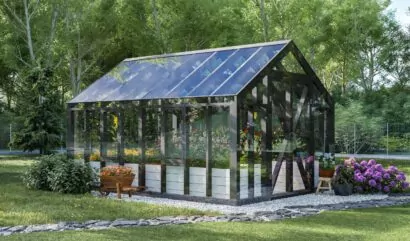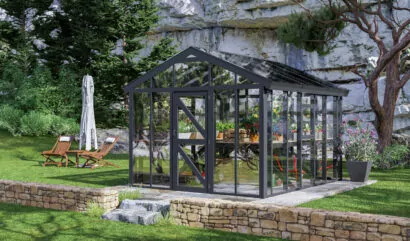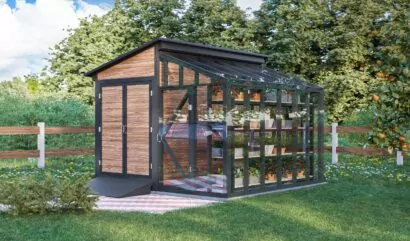A Guide to Choosing the Right Greenhouse Plan
If you’re feeling overwhelmed by the idea of choosing a greenhouse plan, you’re not alone. But rest assured, in this guide we’ll cover everything you need to know to make a smart decision that supports your gardening goals, climate, and available space.
Clarifying Your Gardening Goals
Clearly identifying how you plan to use your greenhouse is key to choosing the right plan. If you’re looking to garden year-round, and you live in a climate that has four distinct seasons, you’ll need to think about heating, cooling, and insulation systems. If you’re interested in extending your growing season (without gardening year-round), you may need to focus on some climate control features. Interested in starting seedlings? You’ll want to prioritize light exposure. If you’re cultivating plants with specific needs (like temperature-sensitive vegetables), you’ll need to make sure that you think through lighting, humidity, drip irrigation and other factors they’ll need for optimal growth.
The Importance of Location
Choose the location of your greenhouse carefully. Sunlight is a key factor, and many gardening experts recommend that you orient your greenhouse facing east or west to maximize the amount of sunlight it gets during the day. You’ll also want to choose a flat area for proper drainage, and you’ll need to be close to water and electricity to make it convenient for you to care for your plants. Wind protection is also an important consideration in areas that regularly experience severe high-wind storms. It’s also smart to avoid areas that are in the shade most of the day from trees or buildings.
Determining the Right Size
Many gardeners who build greenhouses find themselves wishing they had more space. (A common lament of shed builders, too.) If you’re unsure of the size you’d like your structure to be, err on the side of larger options. Typically, greenhouse widths range between 8 and 12 feet. The length of your greenhouse will depend on your preference and the available yard space. You’ll want to have about one to two square feet of space per plant. Walkways should be at least three feet wide, and you may want to leave room for workspaces, like a potting bench, and storage areas.
Comparing Greenhouse Types
When it comes to greenhouse structural types, you have the following options:
- Lean-to greenhouses are a popular choice, as they attach to an existing building, saving space, time, and money. Lean-to designs can also offer easy access to heat, water, and power, but may be limited in size and can overheat more easily than other styles.
- A-frame greenhouses are another common option that can offer more height and better ventilation than lean-to greenhouses.
- Hoop-style, or quonset greenhouses, are simple and economical. This style of greenhouse uses curved metal conduit or PVC pipes to create an arched, semicircular frame, which is covered with plastic sheeting. This type of greenhouse sheds rain and snow easily, but lacks headroom, especially along the sides.
- Gothic arch greenhouses offer a pointed design that also sheds rain and snow easily, and the shape allows for more air volume and energy efficiency than other styles. That being said, Gothic-style greenhouses can be difficult to build, so you may need some professional help.
Choosing Materials Wisely
Carefully choosing your materials can help you build a greenhouse that will stand the test of time–and survive the elements. Some of the most popular greenhouse material options include:
- Aluminum: Aluminum frames are inexpensive, corrosion resistant, surprisingly strong, and lightweight.
- Galvanized steel: Galvanized steel is more expensive than aluminum and weighs more, but it’s stronger.
- Wood: Wood can be a good option, but it requires regular maintenance.
- PVC: PVC options are budget-friendly, but can be less durable than other greenhouse building materials.
You’ll also need to choose the outer covering of your greenhouse. Glass offers fantastic light transmission, but can be expensive. Rigid polycarbonate panels offer a good balance of durability and insulation at a moderate cost. Polyethylene film is less expensive but needs to be replaced frequently. Fiberglass is also a solid option, but it tends to yellow over time, allowing less light to get through to your plants.
Managing the Climate Inside
Greenhouse climate control is vital for healthy plants. Air circulation is key, whether through passive features like roof and side vents or by using mechanical ventilation systems. In warmer regions, like the American South, excessive heat can be a concern. Shade cloths, roll-up screens, and reflective paint can all help regulate temperature. If heat continues to be an issue, you may need to use evaporative cooling systems. Your greenhouse will include appropriate heating, ventilation, shading, and humidity controls. Automated systems can help you conveniently manage the environment inside your greenhouse.
Budgeting for the Project
As you plan the budget for your greenhouse, it’s important to think about more than just the initial structure. You’ll need to pay for site preparation, interior shelving, benches, utilities, climate control issues, and long-term maintenance.
Understanding Permits and Regulations
Building permits and inspections may be necessary before you start the building process. Talk with your local municipal government officials to learn whether you need to acquire permits before you begin construction on your greenhouse. Usually, smaller hobby greenhouses are exempt from permit requirements. If you live in an area with a homeowners’ association (HOA), you’ll likely need board approval before starting construction on an outdoor structure.
Final Considerations
Before you get started on your greenhouse, it’s a good idea to visit other greenhouses to get an idea of what you’d like to create. You’ll need to carefully go over several factors when building your greenhouse, including easy access to your plants, ventilation, structural strength, and climate-control management systems.
While cost is certainly a factor to consider, you want your greenhouse to stand the test of time. Don’t be afraid to invest in quality materials if you can afford to do so. With the right design and smart choices of materials, you’ll be able to create a greenhouse that will become a valuable part of your home and your gardening journey.
